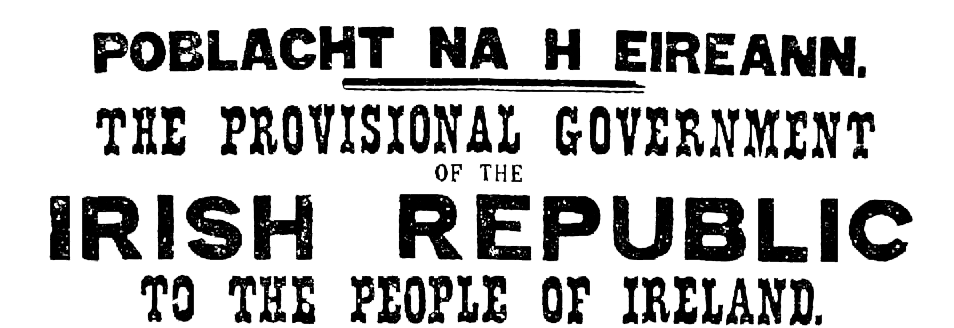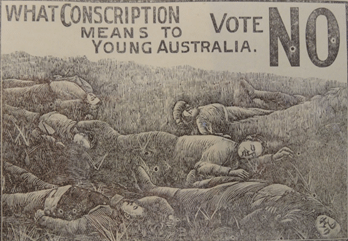Schoolmaster, poet and linguist Patrick Pearce (Pádraig Anraí Mac Piarais) stood on the steps of the General Post Office in Dublin, on the 24th April 1916, and read out an impassioned plea and proclamation:

IRISHMEN AND IRISHWOMEN. In the name of God and the dead generations from which she receives her old tradition of nationhood, Ireland, through us summons our children to her flag and strikes for her freedom…!
As he did so, strategic points around the city were occupied by the Irish Volunteers , and the Irish Citizen Army led by James Connolly (Séamas Ó Conghaile). 200 women of Cumann na mBan also took part.

The aim of the uprising was to make Ireland a Republic. Six days of running battles and street fighting between Irish nationalists and the British army (which included a few Australians called up whilst on leave in Ireland ) resulted in thousands of casualties.

The rebels were finally forced to surrender after heavy artillery pulverised their G.P.O. headquarters.
The heavy-handedness and indifference of the British army to the deaths of bystanders, destruction of city buildings, and mass round-up and detention of civilians, swayed public opinion against the British administration.
The summary executions of rebel leaders breathed new life into an ancient and collective sense of injustice felt by the Irish people. James Connolly, severely wounded and unable to stand, was dragged from his cell, tied upright to a chair and shot by firing squad.
Though the rebels thought they had failed, many of those who died would be remembered on monuments and in ballads. The events of Easter 1916 were marked as a State celebration on Easter Monday 2016 attended by thousands including descendants of the original participants. The events were also remembered in smaller ceremonies in Australian cities.
The Irish rebellion of 1916 impacted Australia. In the main, community leaders from the Catholic Church, the trade union movement, and Labour Party urged their congregations and members to vote against conscription. With few exceptions non-Catholic congregations were urged to remain pro-conscription and loyal to the British Empire.
Official Historian Charles Bean noted:
If it must be acknowledged that the bitterness was increased by the prominence given to the utterances of Archbishop Mannix, it must also be made clear that that distinguished prelate formed a separate storm-centre, giving to and receiving from the main subject of controversy elements which, strictly speaking, were foreign to it. The Irish Sinn Fein rebellion, of Easter week, 1916, and the archbishop’s undisguised sympathy with his countrymen in their effort to smash the existing system of government in Ireland, struck in the hearts of the Irish-Catholic population of Australia chords which harmonised with the ping of bullets in the streets of Dublin rather than with the roar of artillery in Flanders. Dr. Mannix, and the thousands who soon came to look to him as their mouthpiece and their leader, espoused another loyalty than that which had animated every class and section in Australia in the early months of the war. But, to those of his opponents who felt with every nerve the solemnity of Australia’s obligations to the British Empire, there could be but one loyalty in the crisis of the moment, and the archbishop’s references to the war struck them at first with indignation, which gave place to passionate anger as he repeated and emphasised his views.

The IWW (or “Wobblies”) in Australia were avidly anti-conscription. The treatment of leaders such as James Connolly only galvanised their efforts to create a brotherhood of man free of war and poverty.
Consequently, the nation became divided along sectarian and political lines. The NO vote carried the day narrowly in 1916, and by a greater majority in 1917. Pro-conscription evangelist Billy Hughes went on to form his own political party after losing a second plebiscite in 1917.
Ireland’s troubles were not over, but after further conflict and political horse trading 26 of its 32 counties formed a Free State in 1922.
Recommended viewing:
3 Part Documentary “1916 The Irish Rebellion” narrated by Liam Neeson
1916 The Irish Rebellion US Trailer uploaded by University of Notre Dame
Also:
James Connolly: Ireland’s Greatest